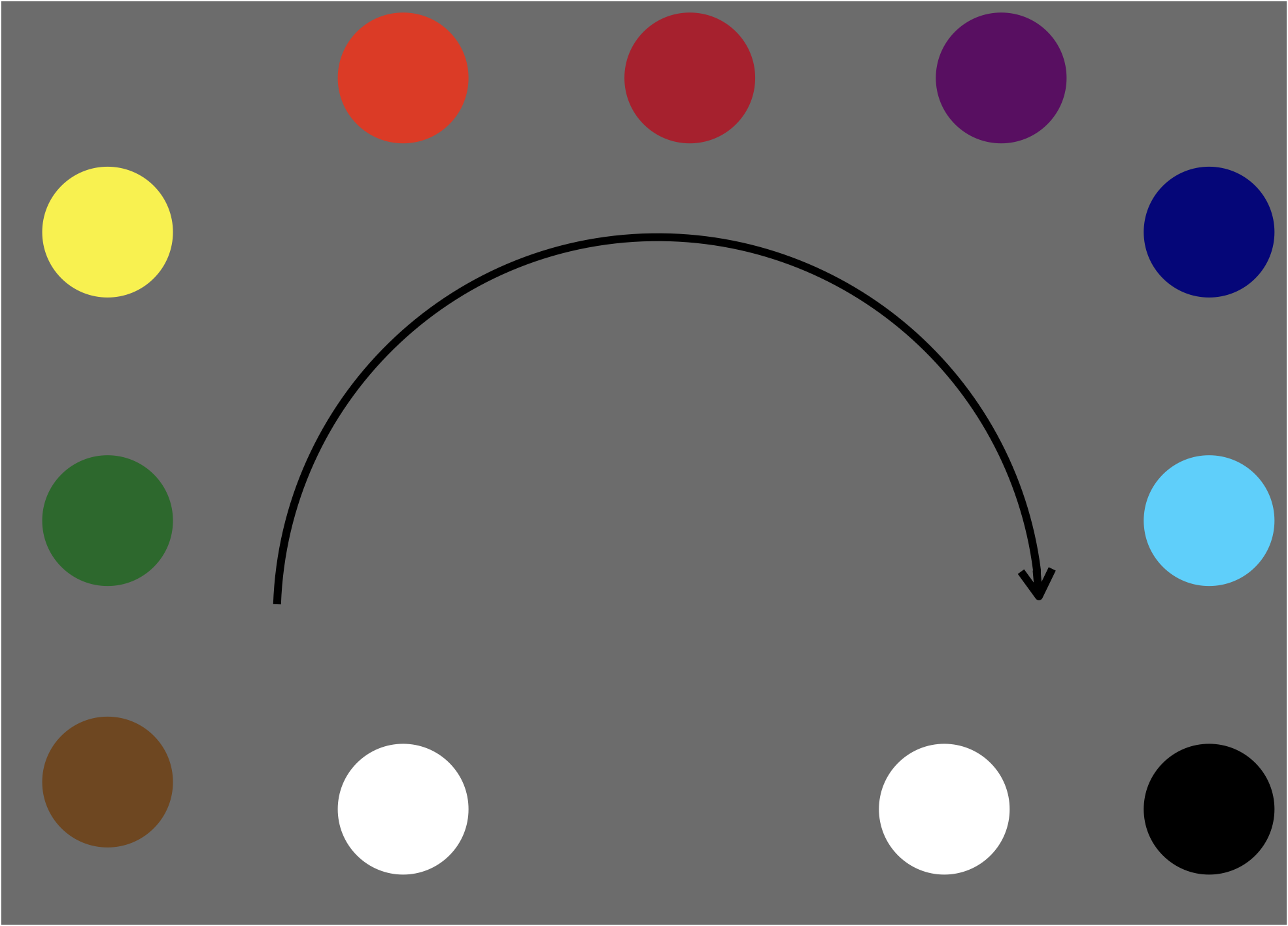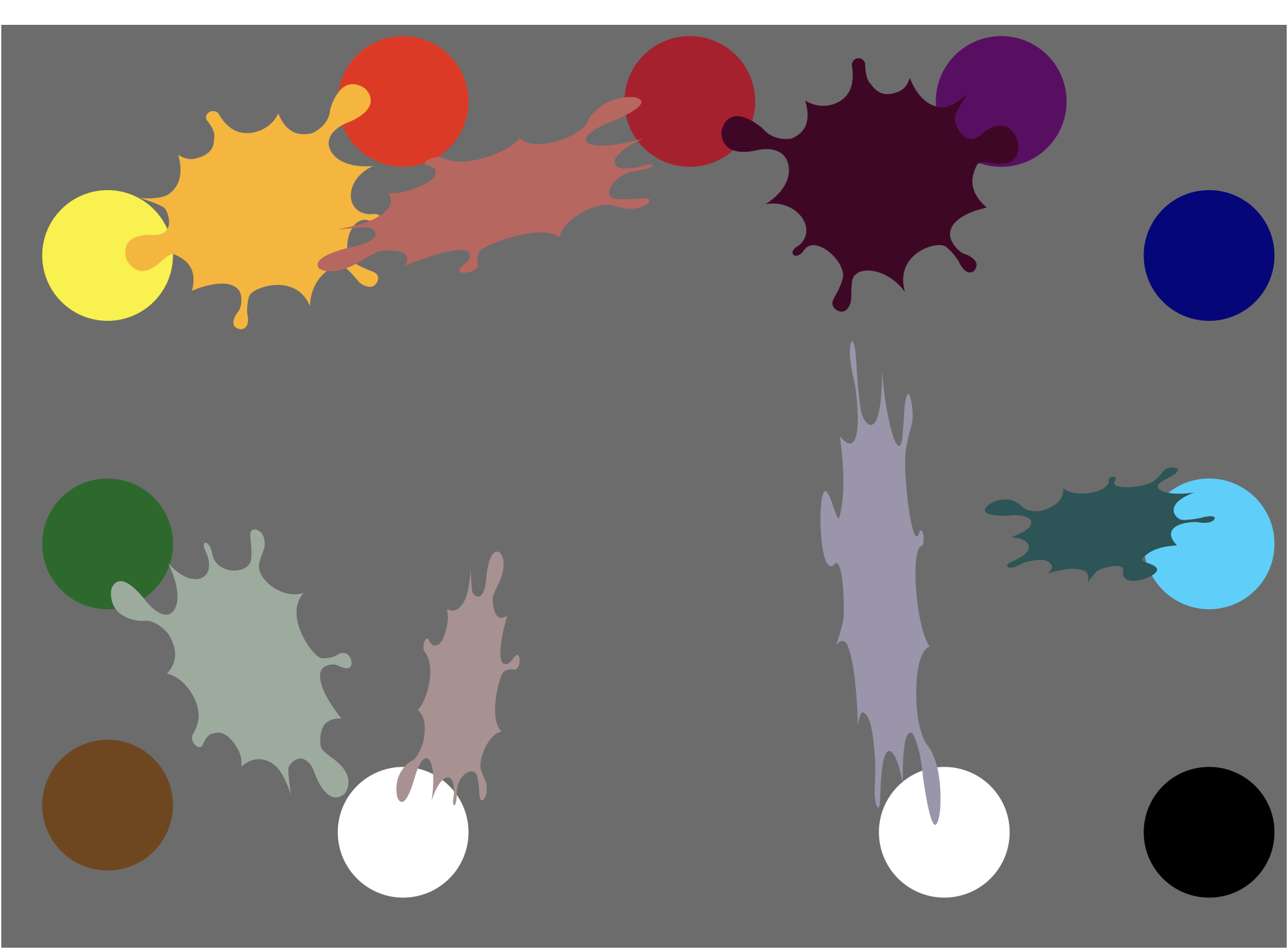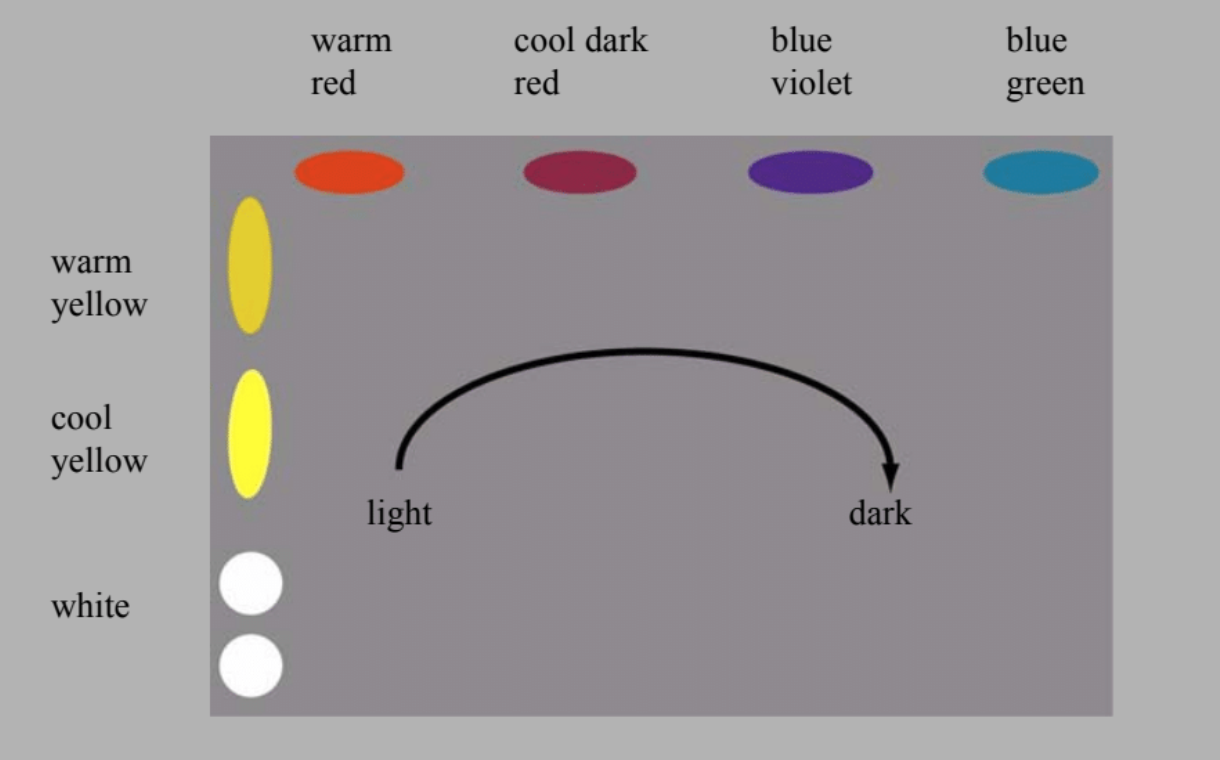(Get free painting tips and plein air painting techniques sent straight to your inbox or on my social media.)
One of the secrets to great color harmony is how you organize your palette. Laying out your palette might seem simple, but many beginners do not do this in the right way. It is important to have a logical organization and flow to the sequence of colors on your palette. If you organize your palette logically, you will find color mixing much easier and you will end up with much more beautiful color in your paintings. This is how.
Color harmony secrets

One of the best ways to layout your palette is to arrange the hues in a spectral order. In other words, lay the colors out in the order of a rainbow. Then if you want to make a color warmer or cooler, you simply mix a little of the adjacent color into your mix.

Another tip is to organize your mixing areas logically. Reserve areas on your palette for dark colors, light colors, and grays.
When you are mixing colors, drag them into the mixing area to make colors that harmonize well. Do not pick up small amounts of color and create lots of small color mixing areas. You can easily lose harmony that way.
A beginner palette

It is best for beginners to start off with a simple palette like this warm/cool primary palette. This is a logical layout of colors organized by value from light colors on the left to darker colors on the right. When you are starting out, these are all the colors you will need. There are two of each of the three primary colors: a cool (bluer) version and a warm (redder) version of each.
To learn more
We have built an advisor tool to help you choose oil colors. There are a lot of potential palettes you can use, and this tool will help you decide.
Beginners can see more lessons on color and palette layouts in our Virtual Art Academy® Apprentice program.
To learn much more about how to achieve beautiful color harmony in your paintings, as well as learn about other extremely useful tube colors you can add later on to your palette, see the Virtual Art Academy® Apprentice Pro Program.
Thank You
Thank you for taking the time to read this article. I hope you find it useful. If you would like to get free painting tips by email, please sign up for my free tips newsletter.
If you are interested in a structured approach for learning how to paint, take a look at my online painting classes.
Happy painting!
Barry John Raybould
Virtual Art Academy
What The Students Are Saying












THANK YOU. PERFEKT.
I’m beginning to paint in soft pastels. Is there an instructor of these pastels in the virtual art academy?
Hello Bonnie, thank you for your question. Let me first say that the Virtual Art Academy does not employ instructors – it is a comprehensive and systematic 4 year curriculum that will build your skills in all the areas that you need to master in order to paint well, whatever medium you choose to work in. Combined with that is a community platform that lets you work together with other serious students, and to communicate with each other in order give each other feedback that will help you master those key skills taught in the curriculum, as well as give you mutual support and motivation. 99% of the course content applies to all media. The differences in technique are actually not that important in the big scale of things. Technique will not make you a better painter. Understanding the whys of what makes a master painting will. We have students at the Virtual Art Academy using all kinds of media, including pastels. Soft pastels can produce beautiful work, but what you need to understand the most is how to control the values, build a design and notan structure, create a color harmony, design the key concept behind your painting, and what the design approach is going to be in terms of shapes and contrasts. That is whaht is going to determine whether you end up with a beautiful painting or not. Notice there is nothing specific to soft pastels in that list. There are a lot of courses now you can choose on the internet. The only reason to choose the Virtual Art Academy course is if you don’t want to waste time by potentially learning from material created by amateur or self-taught artists and that misses some key principles of painting. If you have gaps in your education or learn from amateur sources, you are going to struggle in the long term. The VAA is not a quick fix – it takes a lot of work. But it is thorough and if you work hard, you will see results. We have students who started from being an absolute beginner to becoming a full time professional painter, as well as many who, although not professional artists, and more hobby artists, have nevertheless managed to sell paintings and get accepted into various art organizations and societies. I hope that helps. Please feel to drop us a line if you have any more questions, via our contact us page.